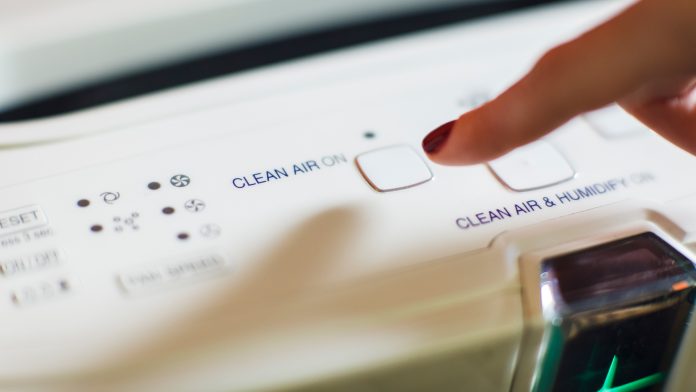Guest contributor Ali Dockerty explores the health implications of poor indoor air quality and the emergence of purifying technology.
Air pollution causes more than three million deaths annually and globally. The Harvard School of Public Health has linked poor air quality to lung cancer, strokes, heart disease, asthma, allergies; and a bevy of other surprisingly related symptoms. However, when we hear the term ‘air pollution’, we typically think of auto exhaust, smog and greenhouse gases. Most of us aren’t aware that the air we breathe inside tends to be up to five times more polluted than the air outdoors. Indoor air pollution consists mostly of dust, mites, dander, mould spores, volatile organic compounds (VOCs)and pathogens. On average, modern society lives and works indoors 90% of the day, which makes these statistics quite unsettling. Fortunately, there are many developments in the world of science and technology that can help us monitor and improve our indoor air quality.
The future of air purifiers
Air purifiers have come a long way since their inception. Modern air cleaning technology is beyond sufficient when it comes to providing optimal indoor air quality. There are quite a few different types to choose from, each with their own strengths and specialities. Perhaps the best known of the group is the HEPA (high efficiency particulate air) filter. Developed during World War II to eliminate radioactive toxins produced during atomic bomb creation, the HEPA is still the most efficient type of air filter available. They’re made from fibreglass and specialise in eliminating dust, mites, pollens, mould, pet dander, bacteria and 99.97% of common allergens.
Activated carbon (AC) filters use adsorption technology. Not to be confused with absorption, adsorption refers to the adherence of atoms, ions, or molecules (from gas, liquid or dissolved solids) to a designated surface. AC filters specialise in trapping chemical fumes, odours, gases and smoke. Ionisers and ozone generators are also examples of modern air purification technology. Although they don’t have the same impressive rate of efficiency as the HEPA or the AC filters, they work proactively, meaning unlike HEPA and AC, they don’t need fans to operate.
Get insight into the air you’re breathing
Analysis of over 49,000 home indoor air quality tests conducted by AirAdvice as far back as 2007 shows that 96.7% of homes have at least one indoor air pollution issue. Compounding this statistic is the fact that most of us aren’t aware that there is a problem. We suffer from allergy symptoms and sometimes even more serious health complications without realising contaminants we’re breathing in our own homes are the likeliest culprits. An indoor air quality monitor will measure and report back the levels of common indoor contaminants, along with other conditions in the home, such as excess dust, toxic household cleaner emissions, VOCs; and even unhealthy humidity levels. Some plug right into a power outlet, while others are battery operated; many can be paired with appliances such as air purifiers, fans and dehumidifiers to regulate issues that arise in real time.
Automate your indoor air quality
Smart technology is becoming increasingly affordable. One of the latest trends in smart technology, home automation, can now be utilised to monitor and improve the quality of air in the home using an existing HVAC system and a whole-house purifying system. An automated indoor air quality monitor allows users to view data on their phone in real time, as well as past measurements and events. When the system receives a bad air quality report from the monitor, it’s triggered to run fans, adjust humidity and boost airflow, sending clean air back out through all of the HVAC supply vents in the home. In addition to purifying the air, a smart thermostat and air purifying system reduces the amount of energy a home uses, ultimately saving the homeowner money.
Breathing quality air inside is integral for good physical and mental health. Air quality in the home can be improved through simple solutions such as opening windows for ventilation, adopting houseplants, or switching to natural household cleaning products. Taking advantage of modern technology, however, will help us achieve optimal results and breathe easy.







